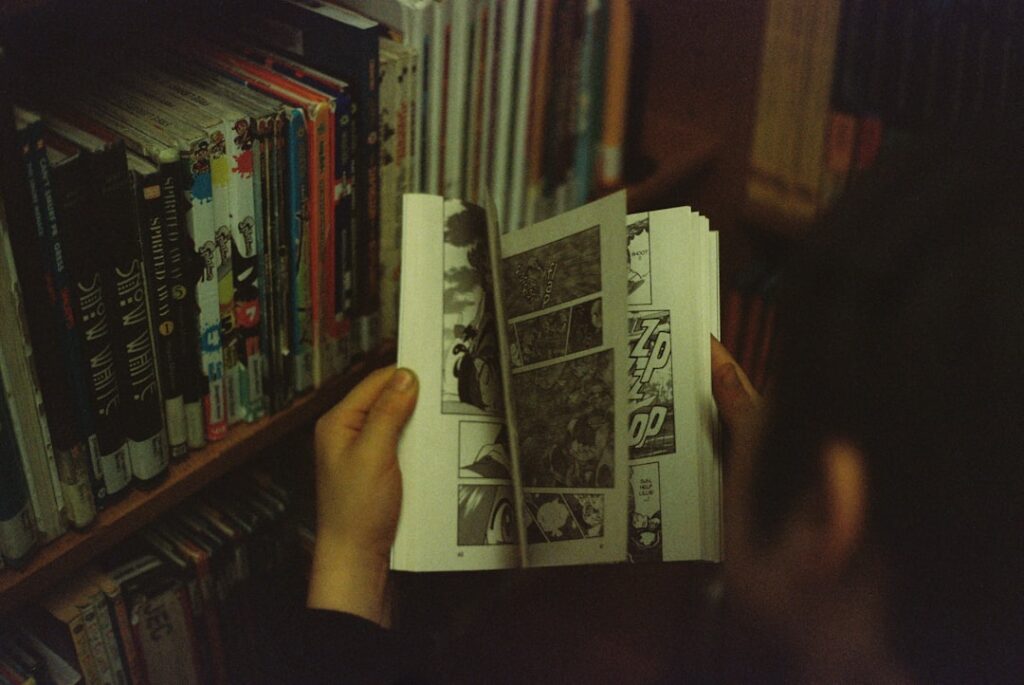Ay Papi is a term that has its origins in Latin American culture, specifically in the Spanish language. The term “papi” is a colloquial way of addressing a male figure, often used to show affection or familiarity. It can be traced back to the Spanish language and its influence on various Latin American countries. The term “ay” is an exclamation used to express surprise, excitement, or even frustration. When combined, “ay papi” becomes a playful and endearing way of addressing a male figure, often used in a flirtatious or affectionate manner.
The origins of “ay papi” can be traced back to the cultural and linguistic influences of Latin America, particularly in countries such as Mexico, Puerto Rico, and the Dominican Republic. The term has been used for decades in these regions as a way of expressing affection or attraction towards a male figure. It has become deeply ingrained in the cultural fabric of these countries and has been passed down through generations as a colloquial expression of endearment. As Latin American culture has spread and influenced global popular culture, the term “ay papi” has also gained recognition and popularity outside of its original cultural context.
The term “ay papi” has evolved over time to become a widely recognized and used expression in popular culture, particularly in the United States and other English-speaking countries. Its origins in Latin American culture have contributed to its appeal and exoticism, making it a popular phrase in music, film, television, and everyday conversation. The term has become synonymous with a sense of playfulness, affection, and even seduction, making it a versatile expression that has transcended its original cultural context to become a global phenomenon.
Key Takeaways
- Ay Papi has roots in history, tracing back to its origins in Latin American culture and language.
- Its impact on popular media, including music, film, and television, has been significant, influencing various aspects of entertainment.
- The influence of Ay Papi on gender representation has been explored, with its impact on masculinity and femininity being a topic of discussion.
- Contemporary designers and artists have been inspired by Ay Papi, incorporating its elements into fashion and art.
- Ay Papi has influenced slang and linguistic trends, shaping language and communication in modern society.
- The use of Ay Papi in modern culture has sparked controversies surrounding cultural appropriation, leading to discussions about its ethical use.
- The future of Ay Papi is predicted to continue evolving and influencing modern society, with its impact expected to persist in the years to come.
Ay Papi in Popular Media: Its Impact on Music, Film, and Television
The influence of “ay papi” in popular media can be seen in various forms of entertainment, particularly in music, film, and television. In music, the term has been used in numerous songs across different genres, from Latin music to mainstream pop and hip-hop. Artists such as Jennifer Lopez, Shakira, and Pitbull have incorporated the term “ay papi” into their lyrics, adding a touch of Latin flavor and sensuality to their music. The use of “ay papi” in music has helped to popularize the term and introduce it to a wider audience, contributing to its global recognition and appeal.
In film and television, “ay papi” has been used as a playful and flirtatious expression, often associated with romantic or seductive scenes. It has been featured in romantic comedies, telenovelas, and other forms of entertainment as a way of conveying affection or attraction towards a male character. The use of “ay papi” in these mediums has helped to reinforce its association with romance and seduction, further solidifying its place in popular culture as a charming and endearing expression.
The impact of “ay papi” in popular media has contributed to its widespread recognition and use in everyday conversation. Its incorporation into music, film, and television has helped to popularize the term and introduce it to new audiences around the world. As a result, “ay papi” has become a familiar and beloved expression that is synonymous with affection, playfulness, and romance in popular culture.
Ay Papi and Gender Representation: Exploring its Influence on Masculinity and Femininity
The use of “ay papi” in popular culture has had an influence on gender representation, particularly in its association with masculinity and femininity. The term is often used as a way of addressing a male figure, conveying affection or attraction towards them. In this sense, “ay papi” has become associated with qualities such as charm, confidence, and sensuality, which are often attributed to masculinity. The term has been used to portray male characters as desirable and alluring figures, contributing to its association with traditional ideals of masculinity.
On the other hand, the use of “ay papi” has also had an impact on femininity, particularly in its association with seduction and playfulness. The term is often used by female characters as a way of expressing affection or attraction towards a male figure, portraying them as confident and assertive in their romantic pursuits. This portrayal of femininity through the use of “ay papi” has contributed to its association with qualities such as charm, allure, and flirtatiousness, adding to its appeal as an endearing expression of affection.
The influence of “ay papi” on gender representation can be seen in its portrayal of traditional ideals of masculinity and femininity in popular culture. The term has been used to convey desirable qualities associated with both genders, contributing to its appeal as a charming and affectionate expression that transcends traditional gender roles.
Ay Papi in Fashion and Art: How it has Inspired Contemporary Designers and Artists
The influence of “ay papi” can also be seen in the world of fashion and art, where it has inspired contemporary designers and artists to incorporate the term into their work. In fashion, “ay papi” has been used as a playful and flirtatious motif in clothing and accessories, adding a touch of Latin flavor and sensuality to various designs. It has been featured in t-shirts, jewelry, and other fashion items as a way of conveying affection or attraction in a stylish and trendy manner. The use of “ay papi” in fashion has helped to popularize the term and introduce it to new audiences through wearable art.
In art, “ay papi” has been used as a subject matter or theme in various forms of visual expression, from paintings to digital art. Artists have incorporated the term into their work as a way of exploring themes of romance, seduction, and cultural identity. The use of “ay papi” in art has helped to celebrate Latin American culture and its influence on contemporary art, adding depth and meaning to the term beyond its colloquial origins.
The influence of “ay papi” in fashion and art has contributed to its recognition as a versatile expression that transcends language barriers. Its incorporation into clothing and accessories has helped to popularize the term and introduce it to new audiences around the world. In art, “ay papi” has been used as a way of celebrating Latin American culture and exploring themes of romance and seduction through visual expression.
Ay Papi and Language: Examining its Influence on Slang and Linguistic Trends
The influence of “ay papi” can also be seen in its impact on slang and linguistic trends, particularly in English-speaking countries where it has gained popularity. The term has been incorporated into everyday conversation as a playful and endearing expression of affection or attraction towards a male figure. Its use as a colloquial expression has contributed to its recognition as a versatile slang term that is often used in casual conversation among friends or romantic partners.
In addition to its use as a slang term, “ay papi” has also influenced linguistic trends by introducing Spanish words and phrases into English-speaking countries. The use of “papi” as a way of addressing a male figure has become increasingly common in English conversation, adding a touch of Latin flavor and exoticism to everyday language. This incorporation of Spanish words and phrases into English-speaking countries reflects the influence of Latin American culture on linguistic trends, contributing to the diversification of language through cultural exchange.
The influence of “ay papi” on slang and linguistic trends can be seen in its widespread use as a playful and endearing expression in everyday conversation. Its incorporation into English-speaking countries reflects the influence of Latin American culture on language, contributing to the diversification of linguistic trends through cultural exchange.
Ay Papi and Cultural Appropriation: Discussing the Controversies Surrounding its Use in Modern Culture

The use of “ay papi” in modern culture has sparked controversies surrounding cultural appropriation, particularly in its adoption by non-Latinx individuals. The term originates from Latin American culture and is deeply rooted in the Spanish language, making it an important part of cultural identity for many Latinx individuals. Its widespread use by non-Latinx individuals has raised concerns about cultural appropriation and the commodification of Latinx culture for mainstream consumption.
The adoption of “ay papi” by non-Latinx individuals has led to debates about the respectful use of cultural expressions and the importance of acknowledging their origins. Critics argue that the casual use of “ay papi” by non-Latinx individuals can perpetuate stereotypes and exoticize Latinx culture without understanding its cultural significance. This raises important questions about the ethical use of cultural expressions and the need for greater awareness about their origins and meanings.
The controversies surrounding the use of “ay papi” in modern culture highlight important discussions about cultural appropriation and the respectful use of cultural expressions. It raises awareness about the need for greater understanding and appreciation of cultural identity, particularly in the context of mainstream consumption.
The Future of Ay Papi: Predicting its Continued Influence and Evolution in Modern Society
As “ay papi” continues to gain recognition and popularity in modern society, its influence is likely to continue evolving across various aspects of popular culture. Its widespread use in music, film, television, fashion, art, language, and everyday conversation reflects its versatility as an endearing expression that transcends cultural boundaries. As Latin American culture continues to influence global popular culture, the appeal of “ay papi” is likely to grow even further.
In the future, “ay papi” is expected to continue influencing popular media by adding a touch of Latin flavor and sensuality to various forms of entertainment. Its association with romance, seduction, playfulness, and cultural identity will contribute to its continued appeal as a charming expression that resonates with audiences around the world. Additionally, its impact on gender representation, slang, linguistic trends, and cultural appropriation will continue sparking important discussions about cultural identity and representation.
In conclusion, “ay papi” has become a beloved expression that reflects the influence of Latin American culture on modern society. Its origins in history have contributed to its recognition as a versatile expression that transcends language barriers. As it continues to evolve across various aspects of popular culture, “ay papi” is expected to maintain its appeal as an endearing expression that resonates with audiences around the world.
Check out the latest article on The Daily Men, where they discuss the impact of Ay Papi on modern comic culture. The article delves into the evolution of adult comics and how Ay Papi has pushed boundaries and challenged societal norms. Click here to read more about the influence of Ay Papi and its significance in the comic industry.
FAQs
What is the meaning of “ay papi”?
“Ay papi” is a Spanish phrase that translates to “oh daddy” in English. It is often used as a term of endearment or flirtation towards a male figure.
Is “ay papi” a common phrase in Spanish-speaking countries?
Yes, “ay papi” is a common phrase in Spanish-speaking countries, particularly in Latin America. It is often used in a playful or affectionate manner.
How is “ay papi” used in popular culture?
“Ay papi” is often used in popular culture, including music, movies, and television, to convey a sense of flirtation, seduction, or affection. It is also commonly used in memes and social media.
Is “ay papi” considered offensive or inappropriate?
While “ay papi” is generally used in a lighthearted or affectionate manner, it can be considered inappropriate or offensive if used inappropriately or without consent. It is important to be mindful of the context and the feelings of the person being addressed.
Are there any alternative phrases similar to “ay papi”?
Yes, there are several alternative phrases similar to “ay papi” that convey a similar sense of affection or flirtation, such as “ay papito” or “ay mi amor.” These phrases may vary depending on the specific dialect or region within the Spanish-speaking world.





